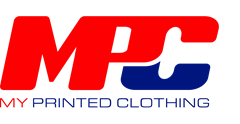
Not every school has a uniform, nor does every workplace. So, what are the pros and cons of having a dress code at work?
What Is a Dress Code?
A dress code is simply a list of rules that dictate what clothes the members of an organisation ought to wear in the workplace. Dress codes may be implemented for health and safety reasons, or to project a particular image to customers, or just to help staff identify one another. Some companies have a very strict dress code, while others let their employees wear more or less whatever they like.
Dress codes affect different workplaces differently. In an office, a rigid dress code can feel like a restrictive and frustrating imposition. However, in a hospital or on a building site, a dress code may be crucial for safety reasons.
Dress Code Pros
Enforcing a dress code in the workplace can benefit your organisation in a number of different ways. Here are some of the key advantages of a dress code:
- Equality. If everyone is wearing the same clothing, nobody feels discriminated against due to the cost or style of their clothes.
- Marketing. When your employees are commuting, or attending a conference, a branded uniform can act as promotion for the business without you having to spend extra on advertising. Here at My Printed Clothing, we can create custom-branded work clothes for your business, such as printed or embroidered polo shirts.
- Professionalism. Whether your company has a specific uniform or simply a formal set of guidelines for employee clothing, a dress code can help to give your team an air of consummate professionalism that will impress customers and visitors.
- Productivity. Studies suggest employees feel more productive and competent when wearing formal business attire, so you may find that a work uniform helps with productivity.
- Safety. In some workplaces, like building sites or laboratories, certain articles of clothing are a legal requirement for safety reasons, so a dress code that includes appropriate Personal Protective Equipment contributes directly to employee safety.
Dress Code Cons
There are downsides to dress codes, too. Here are some of the biggest drawbacks:
- Discrimination. Dress codes can inadvertently enforce discrimination, especially if applied unfairly. Sexist, racist, and religious divides across clothing may be worsened if a dress code is not applied equally to everyone.
- Expense. A company that requires its employees to dress in a certain way must either foot the bill for each person’s uniform, which can be expensive, or ask employees to buy their own clothing, which may prove unpopular.
- Morale. A 2019 survey from the US showed that roughly a third of employees would choose a relaxed, informal dress code over a $5,000 raise. Relaxed dress codes allow individuals to express themselves through clothing, which is helpful for fostering creativity, and may be particularly appreciated by members of the LGBT+ community. By contrast, a formal dress code can make employees feel restricted and uncomfortable.
- Discomfort. Depending on the workplace and its dress code, employees can end the day feeling very uncomfortable in their work clothes. The high heels and pencil skirts often required of women in corporate environments can lead to high levels of personal discomfort, for example.
As useful as a dress code can be for a given company, it may not work well for everyone. If your work does not require a dress code to ensure employee safety, we hope this guide will help you determine if your workplace needs one.
If you have any questions about workplace clothing, don’t hesitate to get in touch. We’ll be more than happy to answer your questions.
Corporatewear from My Printed Clothing
